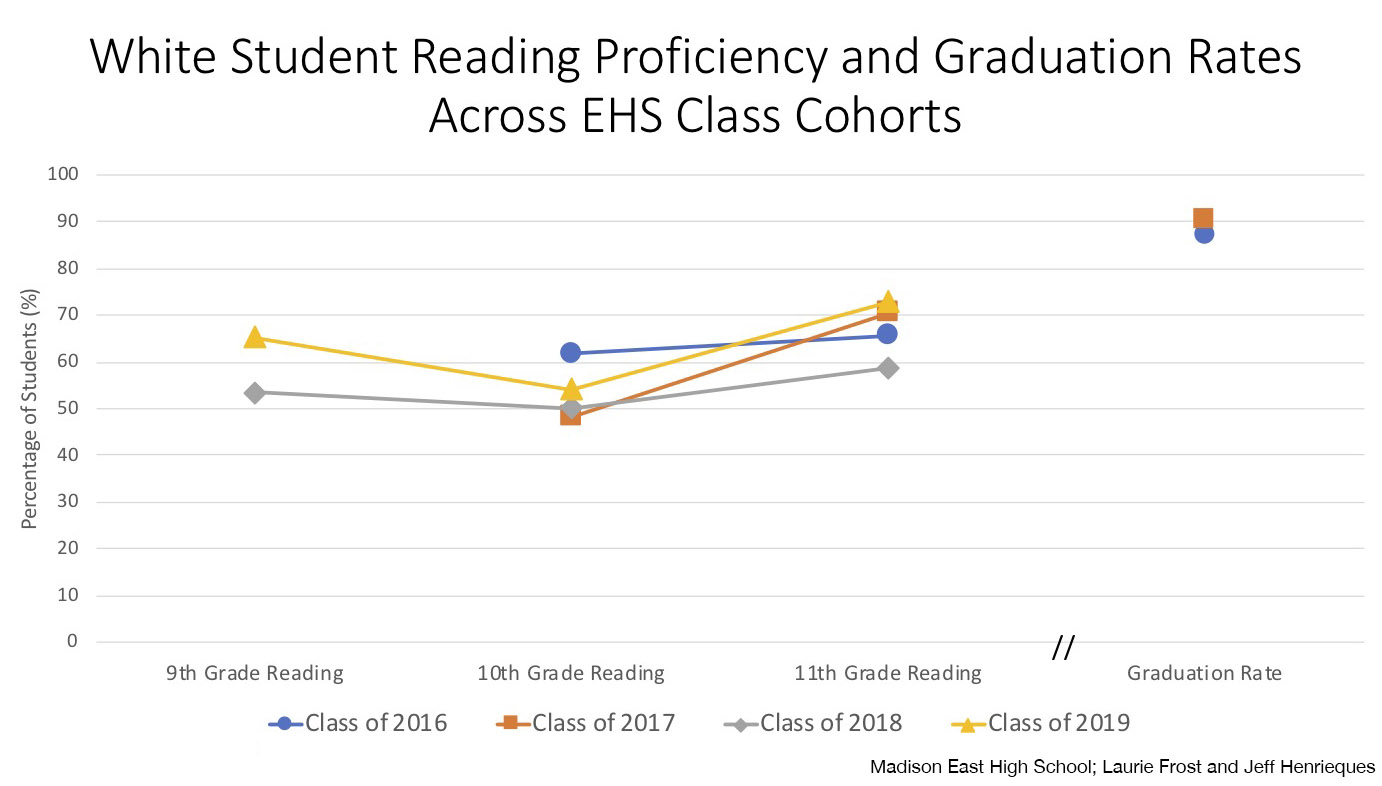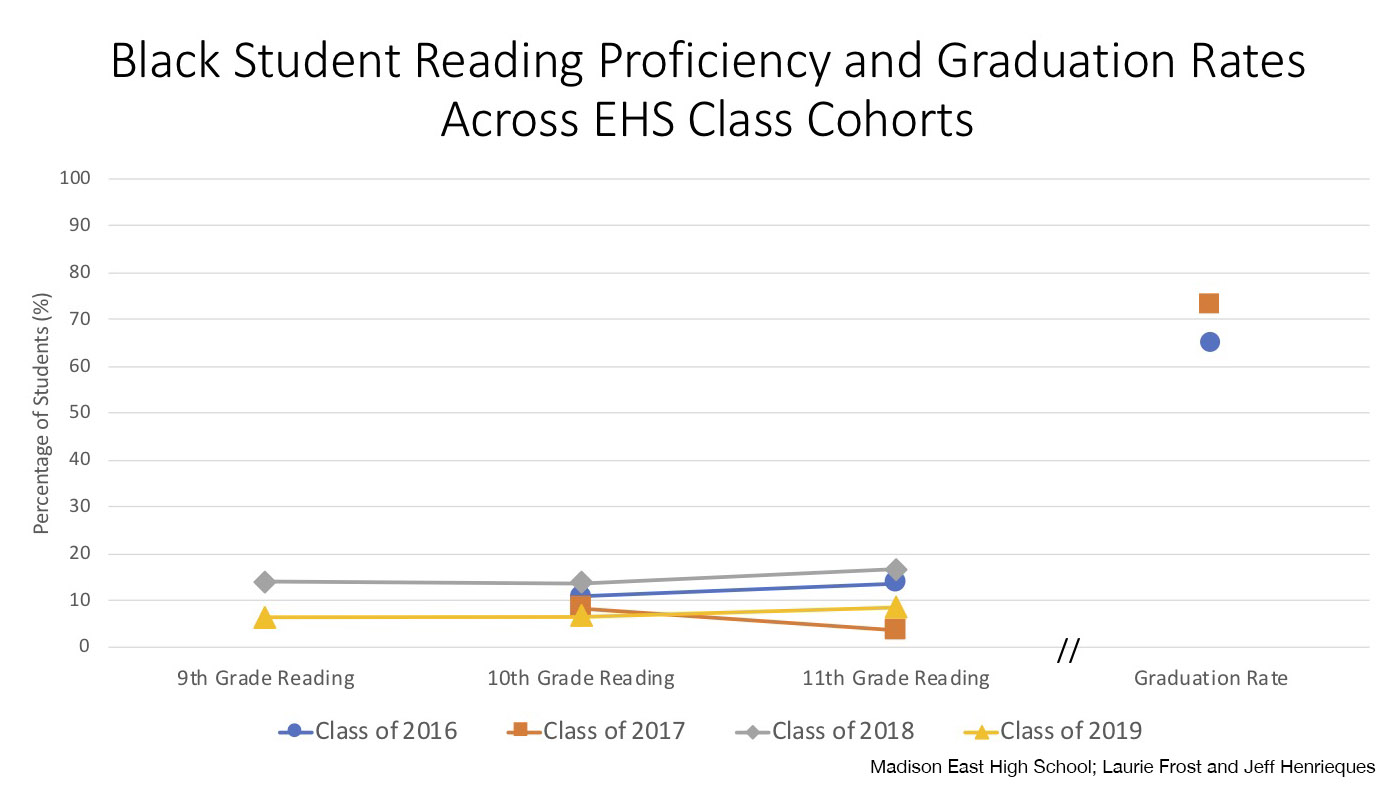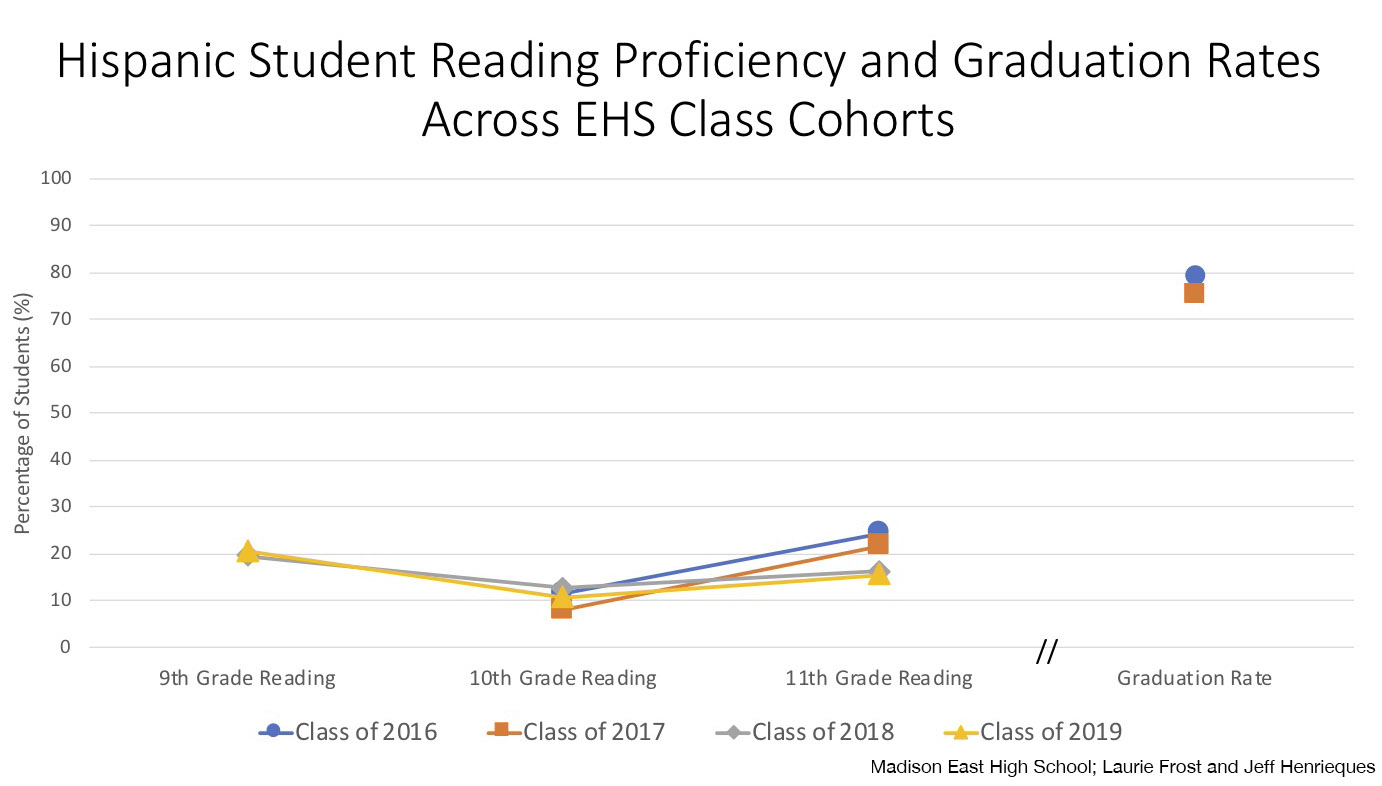“The data clearly indicate that being able to read is not a requirement for graduation at (Madison) East, especially if you are black or Hispanic”
Laurie Frost and Jeff Henriques:
Dear Editor: We read “The new math: how data is changing the way teachers teach” with great interest. We learned that for freshmen at East High School, coming to school 90 percent of the time, having a 3.0 grade point average, and having no more than two failing grades is enough to put them “on track” for high school graduation.
What about core academic skills, we wondered? Do students at East need, for example, to be able to read in order to graduate?
To answer our question — and in keeping with the spirit of the article — we went to the data.
Here are the ninth-, 10th-, and 11th-grade reading proficiency and graduation rates for the East classes of 2016 through 2019. (Note: missing proficiency data is because students were not tested in those years; missing graduation data is because DPI has not reported it yet.)
Click or tap for larger versions
The data clearly indicate that being able to read is not a requirement for graduation at East, especially if you are black or Hispanic. But when 70 percent of your minority students earn diplomas and fewer than 20 percent of them are able to read at grade level, what does that high school diploma mean?
East ninth-graders who don’t know how to read might not want to go to school (because they don’t know how to read!) and thus might be chronically absent. They might not want to go to class (because they don’t know how to read!) and thus might engage in disruptive activities elsewhere. And they might not be able to keep up (because they don’t know how to read!) and thus might fail.
Rather than focus so heavily on attendance, behavior, and socioemotional learning, as described in the article, teachers and administrators should prioritize teaching students how to read. Students who know how to read are more likely to come to school, go to class, work hard, and have a meaningful and rewarding post-high school life.
Madison has long tolerated disastrous reading results, despite spending far more than most taxpayer supported K-12 School Districts.
Compare Madison, WI high school graduation rates and academic achievement data.
The Madison School District’s “Strategic Framework”.
On November 7, Superintendent Art Rainwater made his annual report to the Board of Education on progress toward meeting the district’s student achievement goal in reading. As he did last fall, the superintendent made some interesting claims about the district’s success in closing the academic achievement gap “based on race”.
According to Mr. Rainwater, the place to look for evidence of a closing achievement gap is the comparison of the percentage of African American third graders who score at the lowest level of performance on statewide tests and the percentage of other racial groups scoring at that level. He says that, after accounting for income differences, there is no gap associated with race at the lowest level of achievement in reading. He made the same claim last year, telling the Wisconsin State Journal on September 24, 2004, “for those kids for whom an ability to read would prevent them from being successful, we’ve reduced that percentage very substantially, and basically, for all practical purposes, closed the gap”. Last Monday, he stated that the gap between percentages scoring at the lowest level “is the original gap” that the board set out to close.
Unfortunately, that is not the achievement gap that the board aimed to close.
2006: “They’re all Rich White Kids, and they’ll do just fine, NOT!”
2013: What will be different, this time?
The Wisconsin Department of Public Instruction, lead by Governor Elect, Tony Evers, has waived Massachusetts’ style elementary teacher content knowledge requirements for thousands of teachers.



